Travel Tips
A 2025 Guide to Gentlemen’s Clubs In The US: From Etiquette to Pricing
Published
1 week agoon

Visiting a gentlemen’s clubs in the US is not like visiting an Amsterdam Peep Show. It can be a completely different experience compared to strip clubs in Europe, Asia, or other parts of the world. The rules, culture, pricing, and expectations vary significantly, and if you’re coming from overseas, it’s important to understand the do’s and don’ts before stepping into a club.
Unlike some international clubs where more personal interaction is allowed, strip clubs in the US generally have strict regulations regarding conduct between dancers and patrons. In some places, the clubs operate more as entertainment venues rather than anything more personal.
This guide will cover everything an international visitor needs to know about gentlemen’s clubs in the US, including rules, pricing, etiquette, and how to make the most of the experience without getting taken advantage of.

How Gentleman’s Clubs In The US Differ from Other Countries
If you’ve been to strip clubs in places like Germany, Thailand, or Australia, the US experience may seem more formal and restrictive. In many other countries, strip clubs often function more like nightclubs, with fewer rules regarding physical interaction. Some of the biggest differences in the US include:
- No Touching the Dancers – Unlike in some countries where physical contact may be allowed, in most US clubs, customers are strictly forbidden from touching dancers. Security is usually strict about this rule, and violations can lead to immediate ejection from the club.
- Dancers Can Touch You – While you cannot touch them, dancers are generally allowed to touch patrons within the boundaries of a lap dance or private dance.
- Laws Vary by State and City – Some states allow full nudity, while others require dancers to wear pasties or at least minimal clothing. Alcohol laws also vary, meaning that some clubs that allow full nudity may not be permitted to serve alcohol.
- Tipping Culture – In many countries, tipping is not a big part of the strip club experience. In the US, tipping is a core part of how dancers make money, and customers are expected to tip generously.
Understanding these differences before going into a club can help avoid confusion or embarrassment.

How Much Does It Cost to Visit a Gentlemen’s Clubs In The US?
One of the biggest surprises for international visitors is the cost associated with gentlemen’s clubs in the US. Many assume that strip clubs operate similarly worldwide, but in the US, you can expect to pay for nearly everything.
Typical Costs at a Mid-to-High-Tier Strip Club:
- Cover Charge: $10–$50 (higher-end clubs charge more, some waive the fee if you buy a drink)
- Lap Dances: $20–$50 per song (prices can go even higher in some upscale venues)
- VIP or Private Room Access: $100–$1,000+ depending on duration and club tier
- Drinks: $10–$25 per drink (some clubs require drink purchases)
- Tipping for Dancers on Stage: $1–$5 per song (higher tips get more attention from dancers)
High-end clubs in places like Las Vegas, Miami, or Los Angeles can be significantly more expensive, especially if you opt for bottle service or private areas.

Tipping Etiquette in US Gentlemen’s Clubs
Tipping is a core part of the gentlemen’s club experience in the US, and not knowing how much to tip can make you stand out in a bad way. Here’s a basic guide to proper tipping:
- Stage Tips: If sitting at the stage, tip at least $1 per song or $5+ per dancer per rotation if you want to show interest.
- Lap Dance Tips: Not always required, but adding $5–$10 extra per dance is appreciated.
- VIP Room Tips: If you spend a significant amount of time in a private dance or champagne room, tipping an additional $50–$100 is expected.
- Bartender & Waitress Tips: Tip $1–$2 per drink or 15–20% if buying bottle service.
- Bouncer Tips: Not required but tipping $20–$50 can help if you want better seating or quicker service.
Failure to tip properly can result in being ignored by dancers or getting worse service from staff.

Champagne Rooms: The Unwritten Rules
Many gentlemen’s Clubs In The US offer VIP or “champagne rooms,” where customers can enjoy private entertainment. While standard rules still apply, some clubs allow for more relaxed interaction in these areas.
Here’s what you need to know:
- Expect High Prices – Many clubs charge $500+ for an hour in the champagne room, and that’s before drinks or tips.
- Bottle Service May Be Required – Some clubs require a bottle purchase to gain access to VIP areas, which can add hundreds or even thousands of dollars to the total bill.
- Dancers Will Try to Upsell – Be prepared for dancers to push longer stays, more drinks, or additional “experiences” to keep you spending.
VIP rooms are designed to maximize club revenue, so be cautious of spending beyond your budget.

Understanding the Hustle: The Main Goal of a Dancer is to Get Your Money at a Gentlemen’s Clubs In The US
It is important to go into a gentlemen’s club with the right mindset. The dancers are professionals at getting customers to spend as much as possible. They are not flirting because they like you—they are working.
Common Ways Clubs and Dancers Encourage Spending:
- “Just One More Dance?” – You may think you’re getting one dance, but dancers will keep pushing for more.
- “You Seem Different From the Other Guys Here.” – Some dancers are skilled at creating a fake emotional connection to keep you spending money.
- Upselling Drinks or VIP Time – Dancers may push expensive drinks or private rooms, often suggesting longer stays.
If you go into a club without a spending limit, you will leave with an empty wallet.
How to Pick a Good Club: Judge a Book by Its Cover
Unlike many things in life, when it comes to gentlemen’s clubs, the exterior tells you everything about the interior.
- Upscale Clubs (Las Vegas, Miami, Los Angeles, New York City): Expect high-end service, beautiful dancers, and premium pricing.
- Mid-Tier Clubs: Can offer a balance of affordability and entertainment.
- Small-Town Strip Clubs: Hit or miss—some are friendly and casual, while others can be rundown and sketchy.
- Older, Run-Down Buildings: If the outside looks abandoned, expect cheap drinks, fewer dancers, and a lower-quality experience.
If a club looks like it hasn’t been updated in 30 years, the experience inside will match.
Have Fun, But Be Smart
Visiting a gentlemen’s clubs in the US can be a fun experience if you go in with the right expectations.
Key Takeaways:
Set a Budget – Decide in advance how much you’re willing to spend.
Respect the Rules – No touching dancers unless they touch you first.
Tipping is Mandatory – Dancers, bartenders, and even bouncers expect tips.
Don’t Fall for the Fantasy – The dancer is not your girlfriend.
Avoid Getting Pressured into VIP – If you can’t afford it, walk away.
Judge a Club by Its Exterior – If the outside is old and run-down, the inside will be too.
If you know what to expect at Gentlemen’s Clubs In The US, set spending limits, and treat the experience as entertainment rather than personal interaction, you’ll have a much better time without regretting your financial decisions the next morning.
Four Jandals Adventure travel blog writer

You may like
Travel Tips
Top 10 Warm Weather Places To Visit For Spring Break 2025
Published
22 hours agoon
February 17, 2025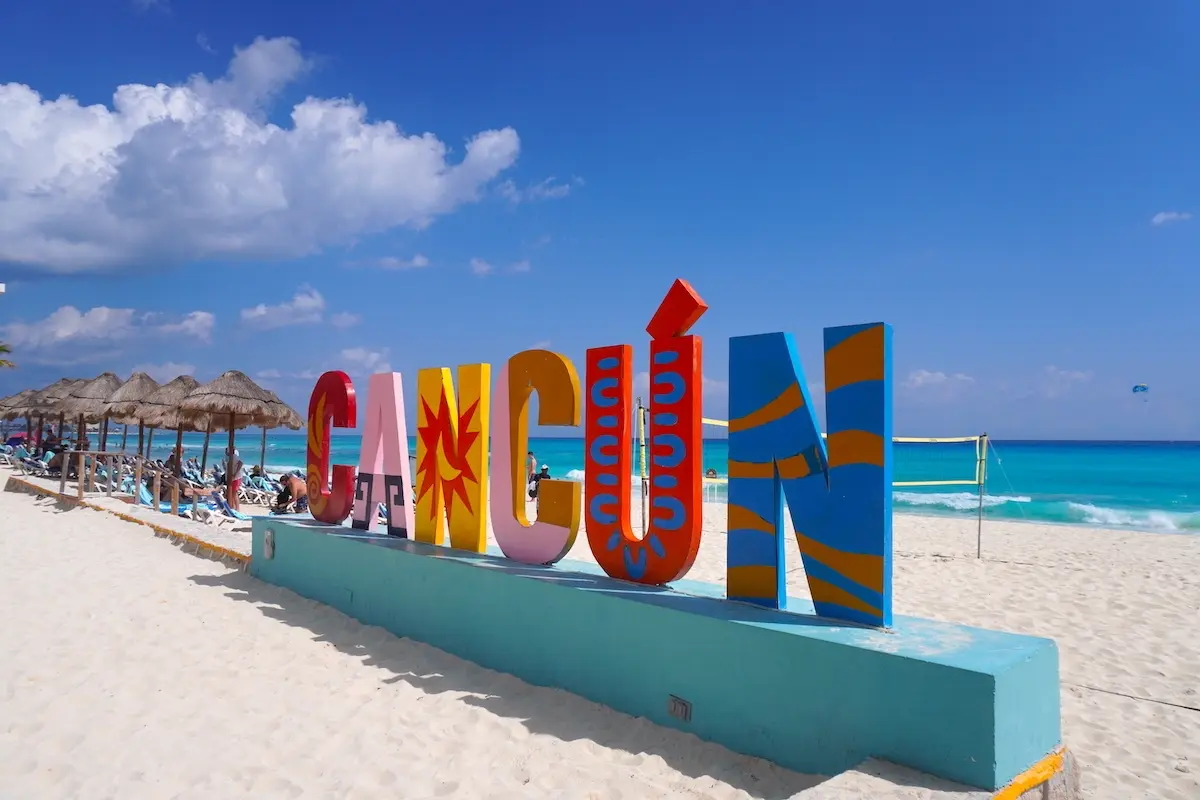
Spring break is just around the corner, and for many travelers, that means one thing—escaping the cold and heading somewhere sunny. Whether you’re looking for a tropical paradise, a desert adventure, or a vibrant city escape, there are plenty of warm weather places to visit for spring break this year. With airfare prices rising and demand at an all-time high, it’s important to plan ahead to secure the best deals.
Here are the top 10 warm weather places to visit for spring break 2025, from classic beach destinations to unique warm-weather getaways.

1. Cancun, Mexico
Cancun has long been a warm weather place to visit for spring break, attracting college students and families alike. Known for its all-inclusive resorts, crystal-clear waters, and lively nightlife, Cancun offers something for everyone. Whether you’re looking to relax on white sandy beaches or enjoy the vibrant party scene, this Mexican hotspot never disappoints.
- Average Temperature in March: 80°F (27°C)
- Best Activities: Snorkeling in Isla Mujeres, exploring Mayan ruins, nightlife in the Hotel Zone
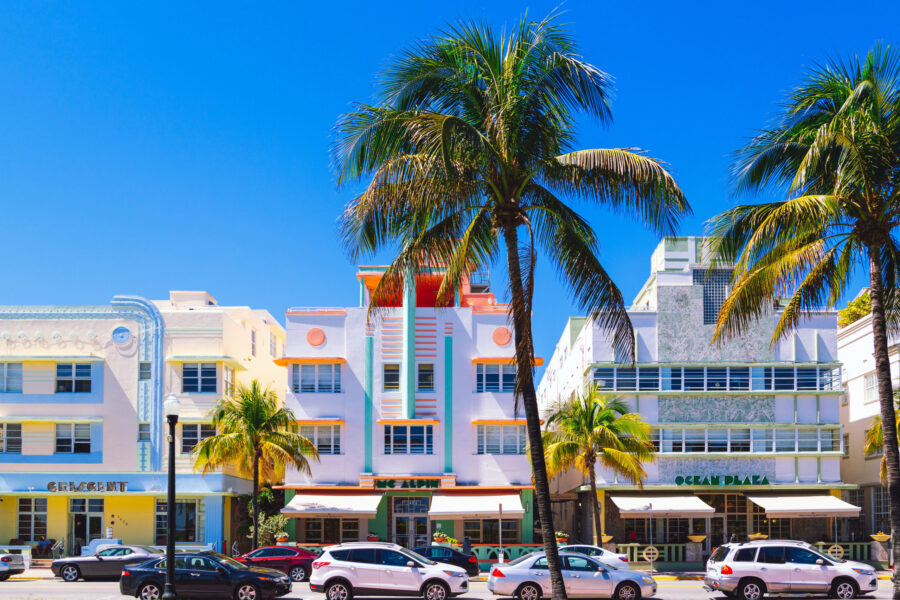
2. Miami, Florida
Miami is one of the best warm weather places to visit for spring break if you want a mix of beautiful beaches and an electrifying city atmosphere. South Beach and downtown Miami come alive during spring break, offering a non-stop party scene, world-class dining, and incredible outdoor activities.
Many visitors looking to live it up in true Miami fashion opt for luxury experiences like yacht charters and helicopter tours. Renting a yacht for the day allows you to cruise along Biscayne Bay, anchor near a sandbar, and enjoy the warm Florida sun in style. Helicopter tours give you a breathtaking aerial view of the city, from the high-rise skyline to the pristine beaches, offering a truly unforgettable experience.
Miami Nightlife & Curfews
Miami’s legendary nightlife is another major draw for spring breakers, with clubs staying open much later than in many other U.S. cities. Venues like E11EVEN and LIV attract celebrity DJs and offer a high-energy atmosphere well into the early morning. However, South Beach has implemented strict curfews during peak spring break weekends due to past incidents, meaning you’ll want to avoid that area if you’re looking for an all-night party. Instead, head to Brickell, Wynwood, or Downtown Miami, where the clubs and bars remain open without restrictions.
- Average Temperature in March: 77°F (25°C)
- Best Activities: Yacht parties, rooftop bars, Everglades airboat tours, helicopter rides over Miami
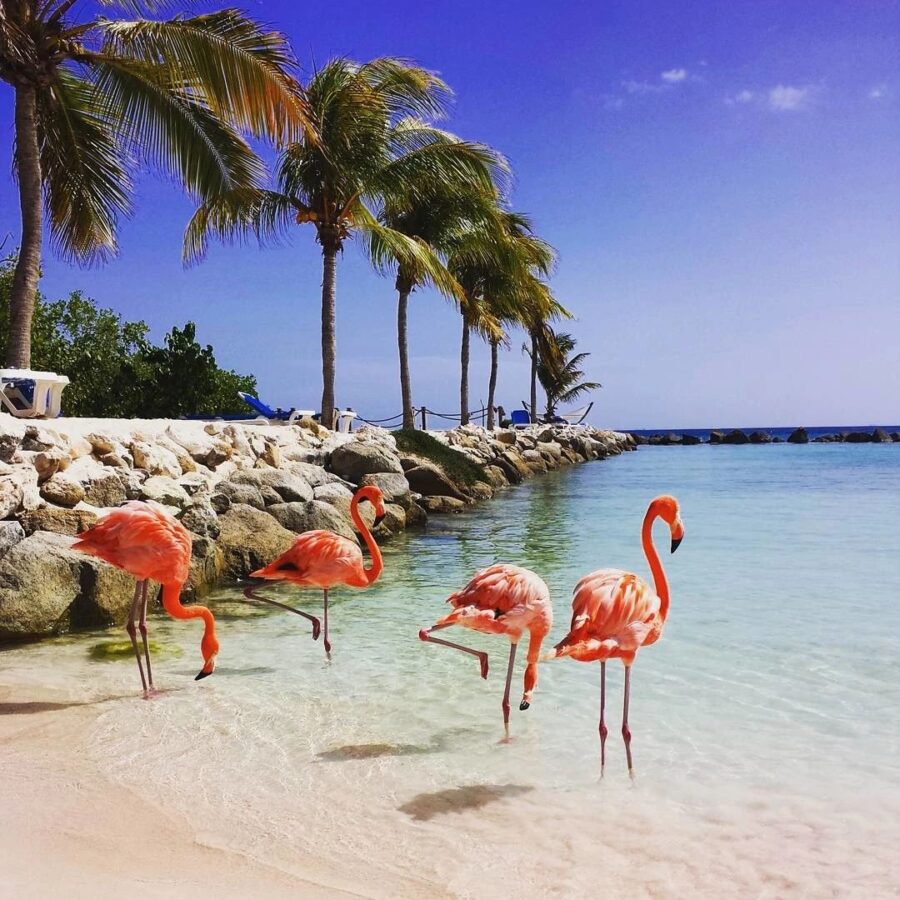
3. Aruba
Located just outside the hurricane belt, Aruba is a perfect warm weather place to visit for spring break with its year-round sunshine and pristine beaches. The island is known for its dry climate, meaning you’ll rarely have to worry about rain ruining your plans.
- Average Temperature in March: 85°F (29°C)
- Best Activities: Snorkeling at Baby Beach, exploring Arikok National Park, luxury beach resorts

4. Scottsdale, Arizona
Not all warm weather places to visit for spring break have to be beaches. Scottsdale offers a desert escape with luxury resorts, world-class golf courses, and plenty of outdoor activities. The city has a vibrant nightlife scene, high-end shopping, and beautiful hiking trails in the Sonoran Desert.
- Average Temperature in March: 75°F (24°C)
- Best Activities: Hiking Camelback Mountain, visiting Old Town Scottsdale, spa retreats

5. The Bahamas
Just a short flight from the U.S., The Bahamas is one of the easiest warm weather places to visit for spring break if you want a quick island getaway. Nassau and Paradise Island are the most popular areas, offering beach clubs, casinos, and stunning resorts.
- Average Temperature in March: 79°F (26°C)
- Best Activities: Swimming with pigs in Exuma, visiting Atlantis Resort, snorkeling in Blue Hole

6. Las Vegas, Nevada
Vegas might not be the first place that comes to mind for warm weather places to visit for spring break, but it’s a great destination if you’re looking for entertainment, nightlife, and pool parties. With daytime temperatures in the 70s, you can enjoy the outdoors without the extreme summer heat.
- Average Temperature in March: 72°F (22°C)
- Best Activities: Pool parties, casino nights, Grand Canyon day trips
7. San Juan, Puerto Rico
For a Caribbean getaway without the need for a passport, Puerto Rico is one of the best warm weather places to visit for spring break in 2025. San Juan offers a mix of stunning beaches, historic sites, and a fantastic food scene.
- Average Temperature in March: 82°F (28°C)
- Best Activities: Exploring Old San Juan, surfing in Rincon, visiting El Yunque Rainforest
8. Cabo San Lucas, Mexico
Cabo is a favorite warm weather place to visit for spring break for those who love luxury resorts, deep-sea fishing, and breathtaking ocean views. With both lively party spots and quiet retreats, it’s a versatile destination for all types of travelers.
- Average Temperature in March: 79°F (26°C)
- Best Activities: Sunset cruises, snorkeling at Lovers Beach, whale watching
9. Key West, Florida
Key West is a laid-back alternative to Miami, making it a fantastic warm weather place to visit for spring break for those looking for a more relaxed vibe. The island’s historic streets, famous sunset celebrations, and great seafood make it a standout destination.
- Average Temperature in March: 76°F (24°C)
- Best Activities: Duval Street nightlife, visiting Ernest Hemingway’s house, snorkeling in Dry Tortugas
10. Oahu, Hawaii
Hawaii is one of the most stunning warm weather places to visit for spring break, with Oahu offering a mix of beautiful beaches, incredible hikes, and rich cultural experiences. Honolulu has a city feel, while the North Shore is a surfer’s paradise.
- Average Temperature in March: 78°F (26°C)
- Best Activities: Surfing at Waikiki Beach, visiting Pearl Harbor, hiking Diamond Head
How Many People Are Expected to Travel for Spring Break 2025?
Spring break 2025 is expected to be one of the busiest travel seasons in years. With pandemic restrictions fully lifted and international travel rebounding, experts predict that millions of travelers will hit warm weather destinations. Airlines and hotels are already seeing higher demand, making it crucial to book early.
Book Your Flights Now Before Prices Rise
If you’re planning to visit one of the top warm weather places for spring break, it’s best to secure your flights and hotels now. Prices will only go up as demand increases. Consider booking mid-week flights and using price comparison tools to find the best deals.
Why Spring Break Will Be More Expensive in 2025
Due to rising fuel costs, inflation, and higher travel demand, spring break travel in 2025 will be more expensive than in previous years. Hotels, flights, and even restaurant prices have increased, making budget planning even more important.
Here are some ways to save money on spring break travel:
- Book flights and accommodations at least 2-3 months in advance.
- Consider all-inclusive resorts to avoid surprise expenses.
- Travel with a group to split costs on hotels and rentals.
- Use travel credit cards to get cashback and perks.
Whether you’re looking for an exciting beach party in Cancun, an outdoor adventure in Arizona, or a city escape in Miami, there are plenty of warm weather places to visit for spring break this year. With rising travel costs, securing your plans early is crucial to getting the best deals.
Wherever you go, be sure to plan ahead, budget wisely, and enjoy your spring break getaway!
Travel Tips
What Are The 5 Easiest Countries in Europe to Get a Visa?
Published
2 days agoon
February 16, 2025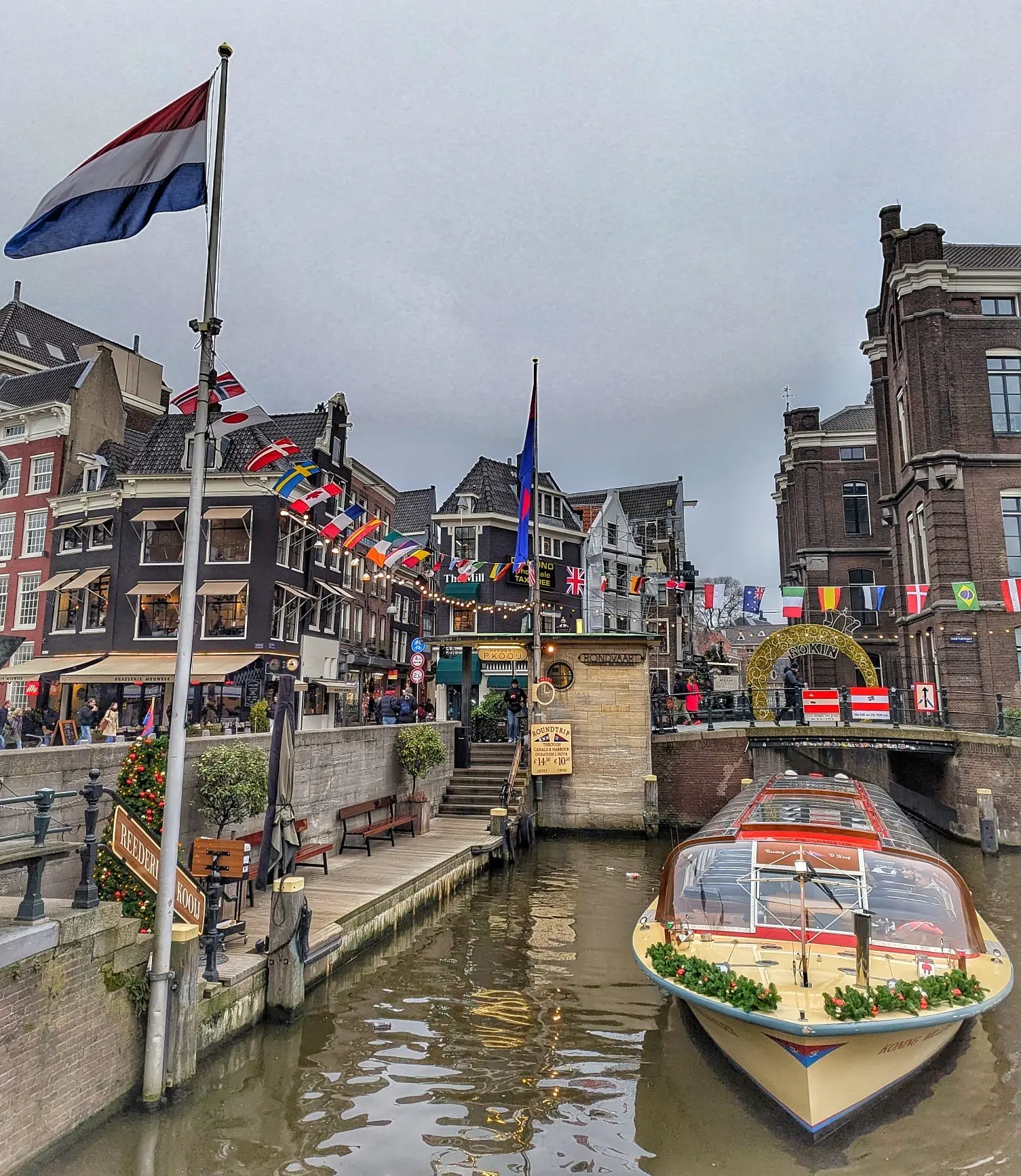
For those who make their income online and want to experience life in Europe, picking the right country is crucial. While some European nations, like Germany and Switzerland, have strict visa requirements and complex bureaucracy, others make the process much easier. In fact, some countries, like Georgia, don’t even require a visa at all.
Whether you’re a freelancer, digital nomad, or remote worker, this guide will break down the easiest countries in Europe to get a visa in 2025. We’ll cover which countries have the simplest visa processes, what it costs to live there, and how you can make your move seamless.

1. Georgia – The Visa-Free Digital Nomad Haven
- Visa Process: No visa is needed for citizens of over 90 countries, including the U.S., Canada, and the U.K.
- Length of Stay: Up to 1 year with visa-free entry.
- Residency Options: The “Remotely from Georgia” program allows remote workers to apply for long-term residency.
- Cost of Living: $800–$1,500/month in Tbilisi, even cheaper in smaller towns.
Why It’s Easy
Georgia is one of the easiest countries in Europe to get a visa because you don’t even need one! Most visitors can stay for a full year visa-free, making it one of the most welcoming places for digital nomads.
Why Live in Georgia?
- Low taxes (1% tax for freelancers under $155,000/year).
- No complicated residency process.
- Affordable housing and fast Wi-Fi.
- Beautiful mountain landscapes and a thriving expat community.
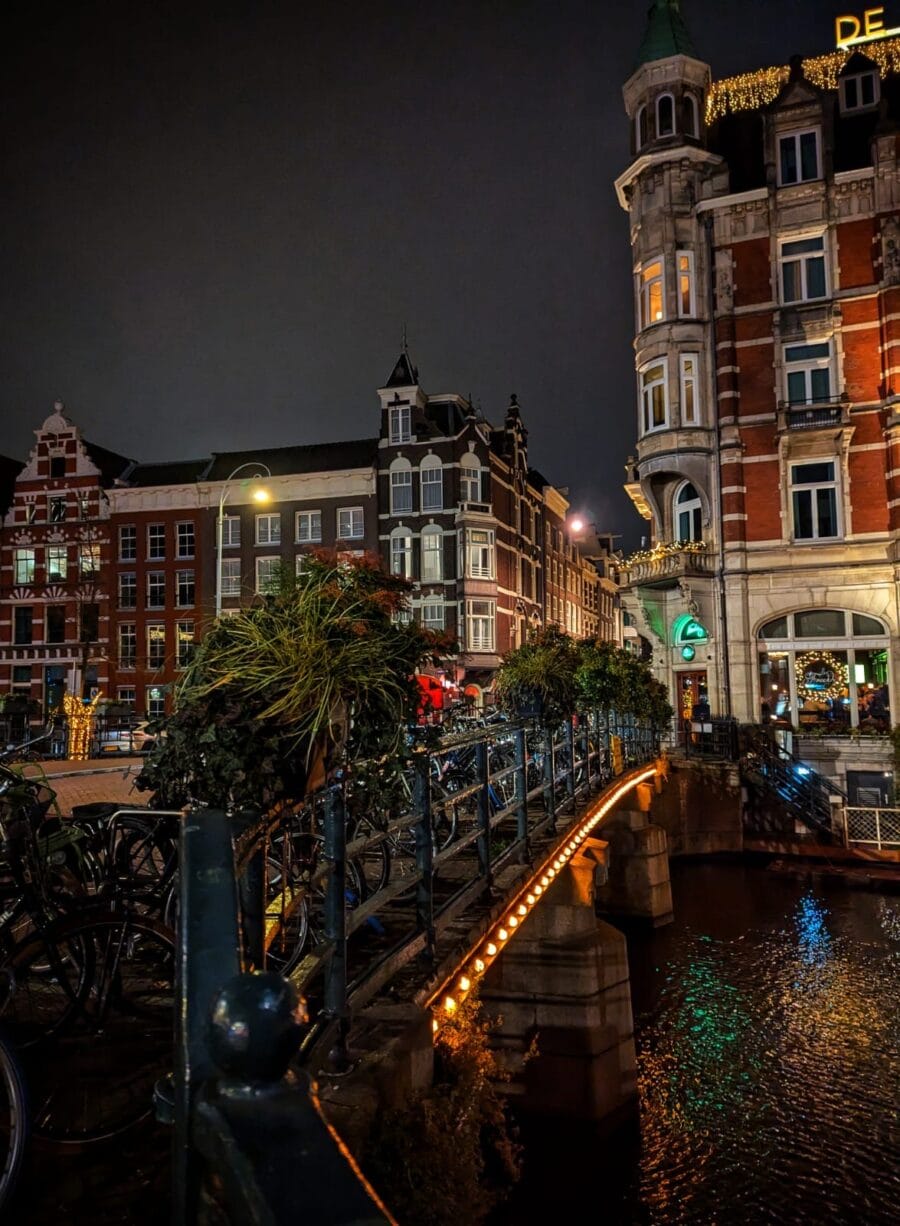
2. Portugal – The Best for Digital Nomad Visas
- Visa Process: The D7 Passive Income Visa or the Digital Nomad Visa (both require proof of remote income).
- Length of Stay: 1-2 years, renewable.
- Residency Options: After five years, you can apply for permanent residency or even citizenship.
- Cost of Living: $1,500–$3,000/month, depending on the city.
Why It’s Easy
Portugal offers some of the easiest long-term visas in Europe. The D7 Visa allows remote workers, freelancers, and retirees to settle in Portugal as long as they make at least €820/month ($900) in passive income. The newer Digital Nomad Visa is also ideal for remote workers making at least €3,280/month ($3,500).
Why Live in Portugal?
- One of Europe’s most affordable Western European countries.
- Amazing climate, beaches, and cities like Lisbon and Porto.
- English is widely spoken.
- Low tax options for expats.

3. Hungary – The Loophole for the EU
- Visa Process: White Card Visa (Hungary’s digital nomad visa).
- Length of Stay: Up to 2 years.
- Residency Options: EU residency after 5 years.
- Cost of Living: $1,200–$2,500/month in Budapest, cheaper in other cities.
Why It’s Easy
Hungary offers the White Card Visa, allowing remote workers earning at least €2,000/month ($2,150 USD) to live in Hungary for up to two years. This is one of the easiest ways to gain access to the EU without dealing with more restrictive countries like Germany or France.
Why Live in Hungary?
- Budapest is a major hub for digital nomads.
- Cheaper than most of Western Europe.
- Centrally located for easy EU travel.
- Alternative path to the EU without stricter requirements.

4. Spain – Great for Remote Workers & Investors
- Visa Process: Digital Nomad Visa (income requirement of €2,520/month) or Non-Lucrative Visa for passive income earners.
- Length of Stay: 1 year, renewable for up to 5 years.
- Residency Options: Permanent residency after 5 years, citizenship after 10 years.
- Cost of Living: $2,000–$3,500/month, with Barcelona and Madrid being pricier.
Why It’s Easy
Spain’s Digital Nomad Visa is perfect for remote workers who can prove their income. Meanwhile, the Non-Lucrative Visa is ideal for those with passive income streams (but you can’t work locally). Both offer easy residency pathways.
Why Live in Spain?
- Vibrant culture, amazing food, and sunny weather.
- High-speed internet and plenty of co-working spaces.
- Large expat and digital nomad communities.
- Access to the Schengen Zone for travel.

5. Malta – English-Speaking & Tax-Friendly
- Visa Process: Nomad Residence Permit (income requirement of €2,700/month).
- Length of Stay: 1 year, renewable.
- Residency Options: Long-term residency with tax benefits.
- Cost of Living: $2,500–$4,000/month, higher than most other European destinations.
Why It’s Easy
Malta’s Nomad Residence Permit is one of the easiest ways for digital nomads to settle in Europe. It allows remote workers to live in Malta while paying low or no income tax under special tax schemes.
Why Live in Malta?
- English is an official language.
- Beautiful Mediterranean climate.
- Low-tax options for freelancers.
- Safe and welcoming for expats.

Getting Around Tough Visa Restrictions in Europe
If your dream is to live in Europe but you don’t meet the visa requirements for certain countries, don’t worry—there are legal loopholes and alternative paths that allow you to stay in Europe long-term. Many digital nomads, freelancers, and remote workers have found ways to extend their stays or gain residency through less conventional means. Here are some of the most effective ways to work around strict visa restrictions.
1. Use an Easier EU Visa to Access the Schengen Zone
One of the best loopholes in European visa laws is using a more flexible country as your entry point. Some EU countries, like Hungary, Portugal, and Spain, offer easier visas than strict nations like Germany, France, or the Netherlands.
How This Works
- Once you get a long-term visa or residency in one Schengen country, you can freely travel and stay in other Schengen countries for up to 90 days every 180 days.
- While you may need to keep an official residence in your visa-issuing country, many nomads split their time between multiple locations.
Example:
- You want to live in Germany, but its visa process is too difficult.
- Instead, you apply for Hungary’s White Card Visa (which is easier to obtain).
- Once approved, you can spend three months in Germany, three months in Hungary, and repeat indefinitely.
This method doesn’t let you officially settle in Germany, but it gives you the freedom to spend a significant portion of your time there without dealing with strict work permit requirements.
2. The 90/180-Day Rule – Schengen Hopping
If you don’t qualify for a visa, you can still legally stay in Europe long-term by strategically moving between Schengen and non-Schengen countries.
How It Works
- The Schengen Zone allows non-EU citizens to stay for up to 90 days within a 180-day period on a tourist visa waiver (for U.S., U.K., and many other passport holders).
- After 90 days in Schengen, you must leave for 90 days before re-entering.
- Non-Schengen countries like Albania, Georgia, Serbia, and Montenegro don’t count toward the 90-day limit.
Example Strategy:
| Month | Location |
|---|---|
| January-March | Spain, France, Germany (Schengen) |
| April-June | Albania, Serbia, Georgia (Non-Schengen) |
| July-September | Portugal, Italy, Netherlands (Schengen) |
| October-December | Turkey, Bosnia, Cyprus (Non-Schengen) |
By rotating between Schengen and non-Schengen countries, you can stay in Europe indefinitely without breaking visa laws.
3. The Golden Visa – Buy Your Way Into Europe
If you have investment capital, you can fast-track residency or citizenship in some European countries. Golden Visas allow foreign nationals to obtain residency by investing in real estate, businesses, or government bonds.
Countries Offering Golden Visas
| Country | Minimum Investment Required | Residency Benefits |
|---|---|---|
| Portugal | €500,000 in real estate or €250,000 in cultural investment | Permanent residency in 5 years, EU travel |
| Spain | €500,000 in real estate | Residency for family, work permit options |
| Greece | €250,000 in real estate | Cheapest EU Golden Visa, fast approval |
| Malta | €600,000+ donation + property purchase | Path to citizenship in 1-3 years |
| Italy | €250,000+ in government bonds or startups | Residency with tax benefits |
This is the fastest way to gain legal long-term residency in Europe, but it requires substantial financial investment.
4. Start a Business or Get a Freelancer Visa
If you’re self-employed, business and freelancer visas are a great way to legally stay in Europe.
Countries Offering Freelancer/Business Visas
| Country | Visa Type | Requirements |
|---|---|---|
| Germany | Freelancer Visa | Must show German clients, health insurance |
| Spain | Self-Employed Visa | Proof of income (€2,520/month) |
| Estonia | Digital Nomad Visa | €3,500/month income from foreign clients |
| France | Profession Libérale Visa | Business plan, proof of income |
| Italy | Self-Employment Visa | Business plan, €18,000 minimum income |
With a freelancer visa, you can run your business from Europe while enjoying residency benefits. Some countries also allow you to bring family members under your visa.
5. Study or Learn a Language in Europe
If you’re under 40 and willing to study, a student visa is a cheap and legal way to stay in Europe long-term.
How This Works:
- Enroll in a language course or university program in a country with easy student visas.
- Many universities allow part-time work so you can support yourself.
- Student visas often convert into work permits after graduation.
Best Student Visa Countries:
| Country | Visa Benefits |
|---|---|
| Spain | Language courses qualify for visas |
| France | Cheap tuition, work permit after graduation |
| Germany | No tuition fees, long-term work options |
| Portugal | Simple application process, digital nomad-friendly |
| Italy | Low tuition costs, residency pathway |
This is a great option for digital nomads who want a long-term legal stay while improving language skills and networking.
6. Get Married or Obtain an Ancestry Visa
If you have family ties in Europe, you might be eligible for a citizenship-by-descent or spousal visa.
Ancestry Visas
Many European countries offer citizenship to people with ancestral roots. If you can prove that your parents or grandparents were citizens, you might be able to claim a passport.
| Country | Ancestry Requirement |
|---|---|
| Italy | Grandparent born in Italy |
| Ireland | Grandparent born in Ireland |
| Poland | Polish ancestry proof |
| Germany | Jewish ancestry pathway |
| Lithuania | Ancestry back to great-grandparents |
Marriage to an EU Citizen
- If you marry an EU citizen, you immediately qualify for a residence permit.
- In most countries, you can apply for citizenship within 3-5 years.
This is a long-term solution but a valid one for those with European heritage or strong relationships.
Why Live in Europe as a Digital Nomad?
Europe is one of the best regions for remote workers. Its mix of fast internet, affordable living options, easy travel, and culture makes it attractive.
Pros of Living in Europe
- High quality of life and safety.
- Affordable healthcare options.
- Easy travel between countries.
- Rich cultural and social experiences.
Cons of Living in Europe
- Higher taxes in some countries.
- Bureaucracy can be slow.
- Some visas don’t allow local work.
What If You Want to Work in Europe Instead?
If you plan on working locally rather than making money online, the visa situation is much tougher. Most European countries require job sponsorships, and competition for work permits is high.
For freelancers or business owners, some countries offer self-employment visas (like Germany’s Freelancer Visa), but the process is usually more complex.
For those who want flexibility, digital nomad visas are a much easier path to long-term residency in Europe.
If You Are A Remote Worker Or Digital Nomad
Moving to Europe doesn’t have to be difficult if you’re a remote worker or digital entrepreneur. Some countries, like Georgia, allow visa-free stays, while others, like Portugal and Spain, offer easy-to-obtain digital nomad visas.
By choosing the easiest countries in Europe to get a visa, you can experience European life without the red tape. Whether you’re looking for affordability, tax advantages, or an easier way into the EU, these five countries offer the best options for remote workers in 2025.
Travel Tips
The Global Green List: 5 Best Countries for Cannabis Enthusiasts
Published
1 week agoon
February 10, 2025
Cannabis legalization and acceptance is finally spreading across the world. Who knew that Cannabis legalization would open up a whole new tourism market…cough cough. Some countries have embraced cannabis for medicinal use, while others have fully legalized it for recreational purposes. If you’re planning your next cannabis-friendly getaway, these are the best countries for cannabis lovers to explore.

1. Canada – The Pioneer of Full Legalization
Why It’s Cannabis-Friendly
Canada became the second country in the world (after Uruguay) to fully legalize cannabis for recreational use in 2018. Adults 18 and older (or 19 in some provinces) can legally purchase, possess, and consume cannabis.
History of Legalization
Canada started with medical marijuana legalization in 2001 and took a progressive approach toward decriminalization, leading to the historic Cannabis Act in 2018, which allowed nationwide recreational sales.
Cannabis Culture
Cannabis is widely accepted across the country. Cities like Vancouver, Toronto, and Montreal have thriving cannabis lounges, dispensaries, and events such as the annual 420 festival.
Where to Buy & Expected Costs
- Government-regulated dispensaries and licensed private retailers sell high-quality cannabis.
- Prices vary by province but expect to pay $8–$15 per gram for quality flower.
- Popular brands include Tweed, Pure Sunfarms, and Aurora.
Avoiding Scams
- Always purchase from legal dispensaries and avoid street dealers.
- Avoid bringing cannabis across provincial borders as rules may differ slightly.

2. Netherlands – The OG of Cannabis Tourism
Why It’s Cannabis-Friendly
The Netherlands, particularly Amsterdam, is famous for its relaxed cannabis laws and Amsterdam Peep Shows. While cannabis is technically not “legal,” it has been decriminalized and widely tolerated since the 1970s.
History of Legalization
The Dutch tolerance policy (Gedogen) allows coffee shops to sell cannabis without legal trouble, creating a unique cannabis culture that has existed for decades.
Cannabis Culture
Amsterdam is a paradise for cannabis lovers, featuring hundreds of coffee shops where visitors can openly consume weed. The relaxed attitude extends to locals and tourists alike, making it one of the best countries for cannabis tourism.
Where to Buy & Expected Costs
- Visit famous coffee shops like The Bulldog, Green House, or Boerejongens.
- Expect to pay €10–€20 per gram depending on the strain and shop.
- Pre-rolled joints cost around €5–€10.
Avoiding Scams
- Only buy from licensed coffee shops and avoid street dealers.
- Be cautious with “tourist traps” offering overpriced, low-quality weed.

3. Uruguay – The First Country to Fully Legalize Cannabis
Why It’s Cannabis-Friendly
Uruguay made history in 2013 by becoming the first country to fully legalize cannabis. Unlike other nations, its legalization is government-controlled, with licensed pharmacies selling cannabis.
History of Legalization
Uruguay’s government aimed to eliminate black market sales while ensuring safety and regulation. The move was largely focused on harm reduction and public health.
Cannabis Culture
Uruguay has a laid-back cannabis culture, with locals frequently growing their own weed. Tourists can’t legally buy cannabis in pharmacies but can enjoy it through social clubs or personal connections.
Where to Buy & Expected Costs
- Cannabis clubs allow members to share cannabis with visitors.
- The government price is around $1–$2 per gram, but club prices vary.
- Private growers often have high-quality strains unavailable in pharmacies.
Avoiding Scams
- Avoid black market sales since legal options are safer and cheaper.
- Connect with cannabis-friendly locals or visit private clubs for access.

4. Thailand – Asia’s Surprise Cannabis Hub
Why It’s Cannabis-Friendly
Thailand shocked the world by decriminalizing cannabis in 2022, making it one of the most cannabis-friendly destinations in Asia. It now has legal dispensaries and allows personal cultivation.
History of Legalization
Thailand initially legalized medical marijuana in 2018 before fully decriminalizing cannabis in 2022. However, new regulations may tighten recreational use, so staying updated is important.
Cannabis Culture
Bangkok, Chiang Mai, and Phuket have booming cannabis scenes with high-quality dispensaries, cannabis cafes, and lounge-style venues. The government still emphasizes “medical use,” but the reality is far more relaxed.
Where to Buy & Expected Costs
- Dispensaries like Cloud Nine, Highland Café, and The Dispensary sell legal cannabis.
- Expect to pay 400–900 THB ($12–$30) per gram depending on the strain.
- Pre-rolls and edibles are also widely available.
Avoiding Scams
- Avoid unlicensed street vendors, as some still sell illegal products.
- Be cautious about public smoking, as rules may change in the future.
5. Spain – A Hidden Gem for Cannabis Enthusiasts
Why It’s Cannabis-Friendly
Spain has some of the most relaxed cannabis laws in Europe, thanks to its Cannabis Social Club model. While sales remain technically illegal, private use and social club memberships allow easy access.
History of Legalization
Spain never fully legalized cannabis but has decriminalized private consumption. In regions like Barcelona and Catalonia, social clubs operate legally, providing a unique model for safe consumption.
Cannabis Culture
Barcelona rivals Amsterdam with its Cannabis Social Clubs, where members enjoy high-quality strains in a private setting. Events like Spannabis (Europe’s largest cannabis expo) highlight its thriving cannabis culture.
Where to Buy & Expected Costs
- Join a Cannabis Social Club like The Plug, HQ, or Green Planet.
- Membership fees range from €20–€50 per year, with weed prices €7–€15 per gram.
- Clubs offer a private, high-quality experience with top-shelf strains.
Avoiding Scams
- Only buy from official Cannabis Social Clubs, as street sales remain illegal.
- Research clubs in advance, as some require pre-registration or invitations.
The Economics of Cannabis Tourism: Pros and Cons
As global attitudes toward cannabis continue to shift, cannabis tourism has emerged as a lucrative industry. With countries like Canada, the Netherlands, and Thailand embracing legalization, travelers are flocking to cannabis-friendly destinations, contributing billions to local economies. But with this economic boost also comes regulatory challenges and potential downsides.
How Cannabis Tourism Impacts Economies
Revenue Generation
Legal cannabis tourism generates significant revenue through:
- Taxation: Countries and states with legal cannabis impose excise taxes on dispensaries, often resulting in millions (or even billions) in revenue.
- Increased Tourism Spending: Cannabis-friendly destinations see higher spending on accommodations, food, events, and transportation.
- Job Creation: The industry creates direct employment in dispensaries, cultivation, and hospitality, as well as indirect jobs in tourism sectors.
For example:
- In Canada, cannabis contributed over $18 billion to the country’s GDP in just a few years after legalization.
- Las Vegas, Nevada, saw a $165 million boost in tax revenue from cannabis sales, much of it tied to tourism.
- Thailand, after legalizing cannabis, saw a rapid expansion in cannabis cafes and dispensaries, drawing global tourists and revitalizing the tourism sector post-pandemic.
Business Opportunities
Cannabis tourism supports various industries, including:
- Dispensaries & Coffee Shops – Direct sales to tourists.
- Cannabis Social Clubs – Membership-based consumption spaces (e.g., Spain).
- Tours & Experiences – Cannabis farm tours, cooking classes, and guided tastings.
- Hospitality & Wellness – “Bud & Breakfasts,” cannabis yoga retreats, and wellness spas.
Countries embracing cannabis tourism have seen a sharp rise in unique business models catering to cannabis consumers. In Amsterdam, for example, coffee shops have long been a staple of the city’s economy, drawing millions of tourists annually. Similarly, Bangkok and Chiang Mai have seen an explosion of dispensaries and cannabis cafes since Thailand decriminalized marijuana.
Pros of Cannabis Tourism
Boosts Local Economies – More tourists mean more spending, job creation, and tax revenue.
Supports Small Businesses – Many dispensaries, growers, and cannabis-themed experiences are run by entrepreneurs rather than large corporations.
Reduces Black Market Sales – Legal tourism options help curb the illegal cannabis trade.
Promotes Education & Safety – Tourists gain access to tested, high-quality cannabis rather than unsafe illicit products.
Increases Demand for Sustainable Agriculture – Legal markets encourage environmentally responsible cultivation methods.
Cons of Cannabis Tourism
Regulatory Uncertainty – Laws can change quickly, creating instability for businesses.
Public Health Concerns – Higher consumption rates in tourist areas may lead to misuse and public disturbances.
Over-Tourism & Local Backlash – Cities like Amsterdam have started restricting cannabis tourism due to overcrowding and nuisance complaints.
Banking & Legal Challenges – Many businesses face difficulties in banking, international trade, and cross-border regulation compliance.
Cultural & Ethical Issues – Some regions with legal cannabis still have strict anti-drug laws for locals, creating legal gray areas.
The Future of Cannabis Tourism
Despite challenges, cannabis tourism is expected to grow as more countries legalize and regulate the industry. However, balancing economic benefits with responsible tourism policies will be key. Countries looking to attract cannabis tourists must ensure that regulations:
- Support safe and legal sales
- Prevent over-commercialization
- Protect public spaces from misuse
As legalization spreads, expect more destinations to capitalize on cannabis tourism, leading to an industry potentially worth hundreds of billions of dollars in the coming decades.
Thoughts on the Best Countries for Cannabis Lovers
These five nations stand out as the best countries for cannabis enthusiasts, whether you’re seeking a legal, relaxed, or underground experience. From Canada’s full legalization to Spain’s exclusive social clubs, each country offers something unique.
If you’re planning a cannabis-friendly trip, remember to:
- Follow local laws and stay updated on regulation changes.
- Avoid street deals and only purchase from legal sources.
- Respect cultural norms, as some countries are more discreet than others.
With cannabis tourism on the rise, expect even more countries to join the global green list in the coming years. Happy travels, and stay elevated!
Meet Cole and Adela
 We have been wearing out our jandals (Kiwi for flip-flops) on our travel adventures around the world since 2009. We think our blog is thought provoking and a little witty. But we have been proven wrong before. Find out more about us here...
We have been wearing out our jandals (Kiwi for flip-flops) on our travel adventures around the world since 2009. We think our blog is thought provoking and a little witty. But we have been proven wrong before. Find out more about us here...
Find
New on Four Jandals
- What Is the Best Alternative to Airbnb for Cheap Stays in 2025? February 18, 2025
- Top 10 Warm Weather Places To Visit For Spring Break 2025 February 17, 2025
- What Are The 5 Easiest Countries in Europe to Get a Visa? February 16, 2025
What Are You Looking For?
- Adventure Travel (240)
- Africa (25)
- Asia (32)
- Auto (2)
- Business (6)
- Canada (4)
- City Guides (26)
- Education (4)
- Entertainment (9)
- Europe (179)
- Events (4)
- Food (16)
- Health (9)
- Home (5)
- Inspiration (12)
- North America (51)
- Oceania (32)
- Other (218)
- Personal Musings (9)
- Reviews (17)
- Sports (2)
- Technology (13)
- Travel Blogging Tips (9)
- Travel Tips (294)
- Work (3)
See Our Favorite Topics
-

 Africa2 months ago
Africa2 months agoBasic Arabic Words for Travel to Egypt
-

 Travel Tips1 month ago
Travel Tips1 month agoFive Fun Reasons to Move To Pasadena
-

 Canada2 months ago
Canada2 months agoVisiting Canada Soon? Here Are A Few Things You Should Know
-

 Travel Tips2 months ago
Travel Tips2 months agoWhy Bansko Europe is the Hidden Gem You Need to Visit This Year!
-

 Europe2 months ago
Europe2 months agoDiscover Sicily’s Hidden Charms: Why Villa Holidays Are the Ultimate Getaway
-

 Technology2 weeks ago
Technology2 weeks ago5 Reasons Wayfinding Kiosks Are Obsolete for DMOs
-

 Entertainment3 weeks ago
Entertainment3 weeks agoAtlantic City Concerts: Top 10 Shows and Exciting Activities for 2025
-

 Travel Tips2 months ago
Travel Tips2 months agoAre Escorts Legal in Las Vegas in 2025?